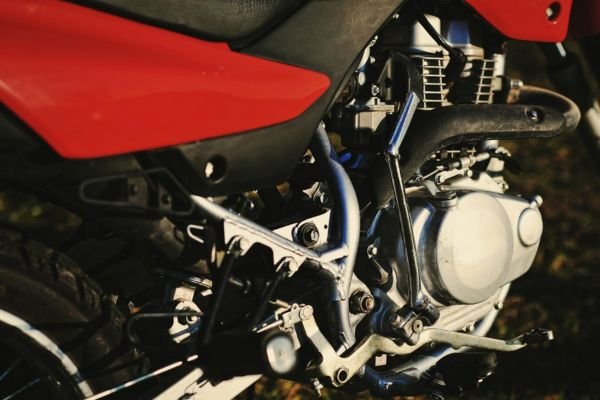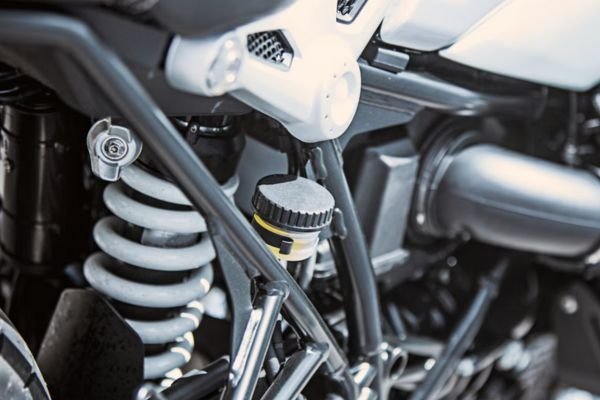Riding a dirt bike is an exhilarating experience, offering the thrill of conquering challenging terrains and pushing the limits of speed. But what if one day, your trusty steed starts showing signs of distress – unusual noises, a drop in performance, or plumes of smoke from the exhaust? Could it be that your bike’s valves are on the verge of failure?

In this article, discover how to identify if dirt bike valves are bad, their impact on engine performance, and effective solutions to fix the issues. Keep your dirt bike running smoothly and efficiently with our comprehensive guide.
We’ll delve into the world of dirt bike valve issues, uncovering the tell-tale signs, common symptoms, and solutions to keep your engine roaring. But before you go full throttle, we’ll reveal a surprising factor that could make or break your bike’s performance – and it’s not what you might expect.
Quick Navigation
What are Valves and Their Functions in a Dirt Bike Engine?
Valves are essential components in a dirt bike engine that control the flow of the air-fuel mixture and exhaust gases. In a 4 stroke engine, there are two types of valves:
- Intake valves allow the air-fuel mixture to enter the combustion chamber during the intake stroke.
- Exhaust valves release burnt gases from the combustion chamber during the exhaust stroke.
These valves work in coordination with the pistons and cylinders to ensure proper engine function.
What are The Signs That Your Dirt Bike Valves are Bad?
Identifying the symptoms of bad valves is crucial to prevent further engine damage. Here are some common signs to watch for:

1. Poor Performance
Difficulty starting the bike, lack of power, rough idling, or stalling can all indicate valve issues. These problems often worsen as the valve condition deteriorates.
2. Unusual Noises
Ticking, knocking, or pinging sounds coming from the engine may suggest valve problems. These noises typically result from improper valve clearance or damaged components.
3. Exhaust Smoke
Excessive white or blue smoke coming from the exhaust could signal valve problems. White smoke usually indicates coolant entering the combustion chamber due to a damaged valve or head gasket, while blue smoke suggests oil burning, which may result from worn valve seals or guides.
4. Poor Fuel Economy
If your dirt bike needs more fuel than usual, bad valves might be the culprit. They can disrupt the air-fuel mixture, causing the engine to run inefficiently.
The Connection Between Pistons, Cylinders, and Valves
The pistons, cylinders, and valves in a dirt bike engine work in unison to generate power. The piston moves within the cylinder during the intake, compression, power, and exhaust strokes, while the valves control the flow of the air-fuel mixture and exhaust gases.
If the valves are not functioning correctly, the engine’s performance will be affected, as it relies on the precise timing and coordination of these components.
Pistons and Valves
Pistons and valves interact closely during the engine’s operation. If the valve timing is off or there are bad valve seals, it can cause issues such as:

- Loss of compression: If the valves are not sealing properly, compression may be lost, resulting in decreased engine power.
- Engine damage: In extreme cases, a piston can collide with an open valve, causing significant engine damage.
Cylinders and Valves
The cylinders house the pistons and valves and are subjected to high pressures and temperatures. If the cylinder’s walls are damaged, it can affect the valves’ sealing and hence causing a loss of compression or other performance issues.
Exhaust Valve Importance
The exhaust valve is responsible for releasing burnt gases from the combustion chamber. It plays a critical role in:
Engine cooling: Exhaust valves help dissipate heat from the combustion chamber, preventing overheating and engine damage.
Emissions control: Properly functioning valves ensure that harmful gases are expelled from the engine, reducing pollution.
Fuel efficiency: A well-sealed valve promotes efficient combustion, leading to better fuel economy and overall performance.
Diagnosing and Fixing Valve Issues
If you suspect that your dirt bike has bad valves, it’s essential to address the issue promptly to prevent further engine damage. Here are some steps to diagnose and fix valve problems:
1. Compression Test
A compression test measures the pressure generated by the engine’s compression stroke. Low or inconsistent compression readings may signal valve problems.
2. Valve Clearance Check
Check the valve clearance according to the manufacturer’s specifications. If the clearance is out of spec, the valves may need adjustment or replacement.
3. Visual Inspection
Remove the valve cover and examine the valves for signs of damage, wear, or carbon buildup. Look for broken springs, worn guides, or damaged valve seats.
4. Leak-Down Test
A leak-down test checks for air leaks in the combustion chamber. A high percentage of leakage could indicate bad valves, allowing air to escape instead of being compressed.
5. Valve Adjustment
Adjust the valve clearance according to the manufacturer’s specifications. This procedure typically involves measuring the clearance with a feeler gauge and adjusting the valve’s locknut or shim to achieve the correct clearance.
6. Valve Cleaning
Remove carbon deposits from the valves and valve seats using a suitable cleaning solution or by manually scraping the buildup. This process can improve sealing and restore compression.
7. Valve Replacement
If the valves are damaged or excessively worn, they may need to be replaced. Consult your dirt bike’s service manual for specific procedures and torque specifications.
8. Seek Professional Help
If you’re unsure how to perform these tasks or if the problem persists despite your efforts, consider seeking the help of a professional mechanic. They can diagnose and repair the issue accurately, ensuring your dirt bike’s performance and longevity.
Preventing Valve Problems
Proactive maintenance can help prevent valve problems and extend the life of your dirt bike’s engine. Here are some tips:
1. Regular Maintenance
Follow the manufacturer’s recommended maintenance schedule for your dirt bike. This schedule typically includes valve clearance checks, oil changes, and air filter cleanings or replacements
2. Use Quality Fuel and Oil
High-quality fuel and oil can help reduce carbon buildup and wear on your engine’s components, including the valves. Be sure to use the recommended oil and fuel types for your dirt bike.
Keep the Air Filter Clean
A clean air filter ensures that your engine receives an adequate supply of clean air, preventing dirt and debris from entering the combustion chamber and causing wear or damage to the valves.
Warm Up the Engine
Allow your dirt bike’s engine to warm up before riding aggressively. This practice can help reduce wear on the valves and other components, as the engine oil reaches its optimal temperature and lubricates the parts effectively.
Avoid Over-Revs
Over-revving the engine can stress the valves and other components excessively, leading to premature wear or failure. Be mindful of the dirt bike’s recommended RPM range and avoid exceeding it.
Conclusions
Recognizing the signs of bad valves, understanding the potential causes, and knowing how to diagnose and fix the issues are crucial for maintaining your dirt bike’s performance and ensuring its longevity.
Regular maintenance, using quality fuel and oil, and taking care of your engine can help prevent valve problems and keep your dirt bike running at its best.
What are some common signs that dirt bike valves are bad?
Some common signs of bad dirt bike valves include poor performance (difficulty starting, lack of power, rough idling, or stalling), unusual noises (ticking, knocking, or pinging), excessive exhaust smoke (white or blue), and poor fuel economy.
How long do dirt bike valves last?
The lifespan of dirt bike valves can vary significantly depending on factors such as the type of engine (two-stroke or four-stroke), the make and model of the dirt bike, the quality of maintenance, and the riding conditions. In general, valves in a well-maintained four-stroke dirt bike engine can last between 100 to 200 hours before requiring adjustment or replacement. Two-stroke engines do not have valves, so this concern does not apply to them. Regular maintenance and following the manufacturer’s recommended service intervals can help extend the life of your dirt bike valves.
Why do dirt bike valves get tight?
Dirt bike valves get tight primarily due to wear and tear in the engine. Over time, the constant heat, pressure, and friction during operation cause the valve and its components to wear down. Tight valves can lead to poor engine performance and, in extreme cases, engine damage.
- 5 Best Motorcycle Bluetooth Helmets - September 12, 2023
- Are Honda Dirt Bikes Reliable & Good? (Helpful Tips!) - June 5, 2023
- Yamaha TTR230 Vs Kawasaki KLX230 (Which Is Better!) - May 29, 2023
